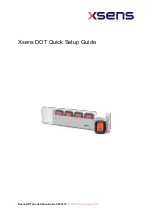
37
36
Note the meaning of below terms used in the manual:
THERAPY = HEALTH IMPROVEMENT and DIAGNOSTICS = PROGNOSIS OF HEALTH STATUS
Note the meaning of below terms used in the manual:
THERAPY = HEALTH IMPROVEMENT and DIAGNOSTICS = PROGNOSIS OF HEALTH STATUS
Setting filters in BRT
Generally, it is best not to use the filters during BRT effect. The function of the filters is to cut
out LOW or HIGH signals – this may be required by the experienced specialist who is absolutely
certain about in the degree of disability the person.
It is best to not use the filters during BRT effect, unless one is absolutely certain about in the
degree of disability the person.
There are basically two filters found on the BRT panel (Fig. 11) – one is the LOW filter which runs
from 100Hz-1000Hz and the other is the HIGH filter which runs from 1kHz-10kHz. (1kHz=1000Hz)
If one presses the button above the LOW filter knob, and sets the filter knob to 100Hz, then one
effectively cuts out the LOW frequencies up to 100 Hz and allowing the 101 through 1,000 Hz to get
through – this one would want to do if the disease process being treated was ACUTE.
If one presses the button above the HIGH filter knob, then one cuts out the HIGH frequencies – if
you set the knob to say 2 KHz, then you would be cutting out the first 2kHz and allowing all the
other frequencies through – this one would want to do if the disease process being treated was
CHRONIC.
In order to determine what filter setting to specify, we can determine this from the potency that
we measure of the specific organ or microbe when using VRT testing. If we examine Diagram 17
below this is made clearer.
Looking at Diagram 17, if we determine that one of the organs we are testing, say prostate is
at the D3 potency, then we would adjust the frequency to 100 Hz in order to cut out the fir
st 100 Hz
range as the potency D3 is higher than 100 Hz. This will allow frequencies between 101 and 1,000
Hz to penetrate, but cut out the frequencies below 100 Hz.
Diagram 17: Choosing Filters Based on Potencies
1
2
3
4
5 6 7 8 9 10
2
2
3
4
5 6 7 8 9 10
3
2
3
4
5 6 7 8 9 10
4
2
3
4
5 6 7 8 9 10
5
Checking that BRT is working
In order to verify if the bioresonance effect module is working OK, the Wellness module control
panel is needed.
1. Switch on BRT mode with the «POWER» button on the «BRT» panel (see Fig. 11). In this case,
the corresponding LED illuminates.
2. Set «VOLUME» to 60 units.
3. Switch on the «Control» mode with the «CONTROL» button. In this case, the corresponding
LED illuminates and an audible signal sounds.
4. Switch on the «Inversion» mode with the «INVERSION» button. The sound will stop, signaling
pathological information suppression mode. Switch on the «inversion» mode with the «INVERSION»
button again.
5. Turn on the LF filter by pressing the «LOW» button of the «FILTERS» block. Adjustment of the
«LOW» knob verifies the functioning of LF (the sound should fade when the knob is rotated in the
direction of 100). Turn off the LF filter.
6. Turn on the HF filter by pressing the «HIGH» button of the «FILTERS» block. Adjustment of the
«HIGH» knob verifies the functioning of HF (the sound should fade when the knob is rotated in the
direction of 10). Turn off the HF filter.
7. Switch on the «Interrupt» mode with the «INTERRUPT» button. Set the «TIME OF INTERRUPT»
knob to position «1». There should be a long beep and a short pause. At position «15» there should
be a short beep and a long pause. Switch off «Interrupt» mode.
8. Switch off «Control» mode.
9. Turn off BRT
Fig. 11: «BRT» panel
This is the end of the testing routine – this does not necessarily have to be repeated every time
the specialist uses BRT – perhaps it is good to run this checking routine every day when BRT is
began with visitors.
CHOOSING FILTERS BASED ON POTENCIES
Summary of Contents for DeVita Professional
Page 27: ......








































